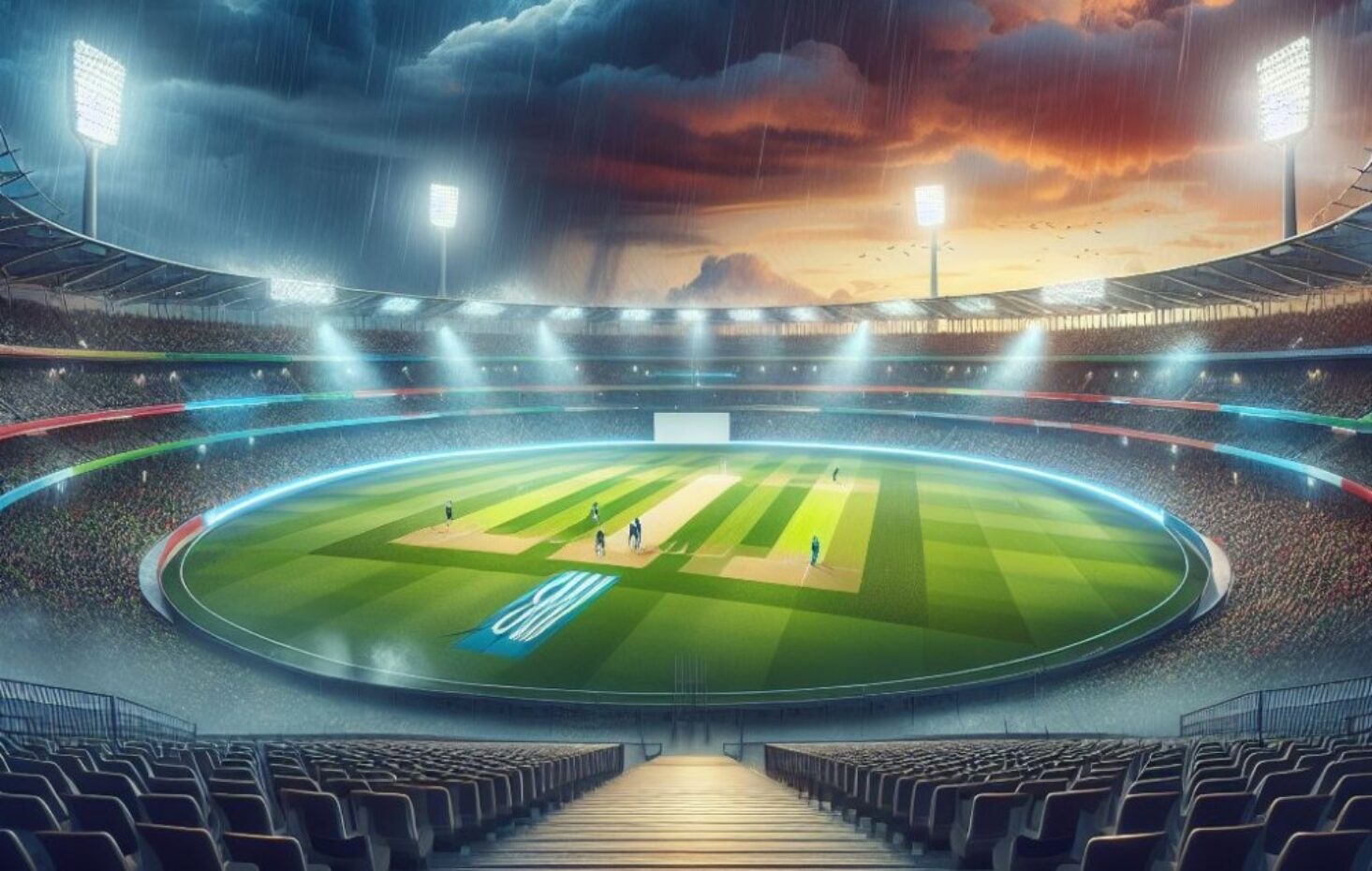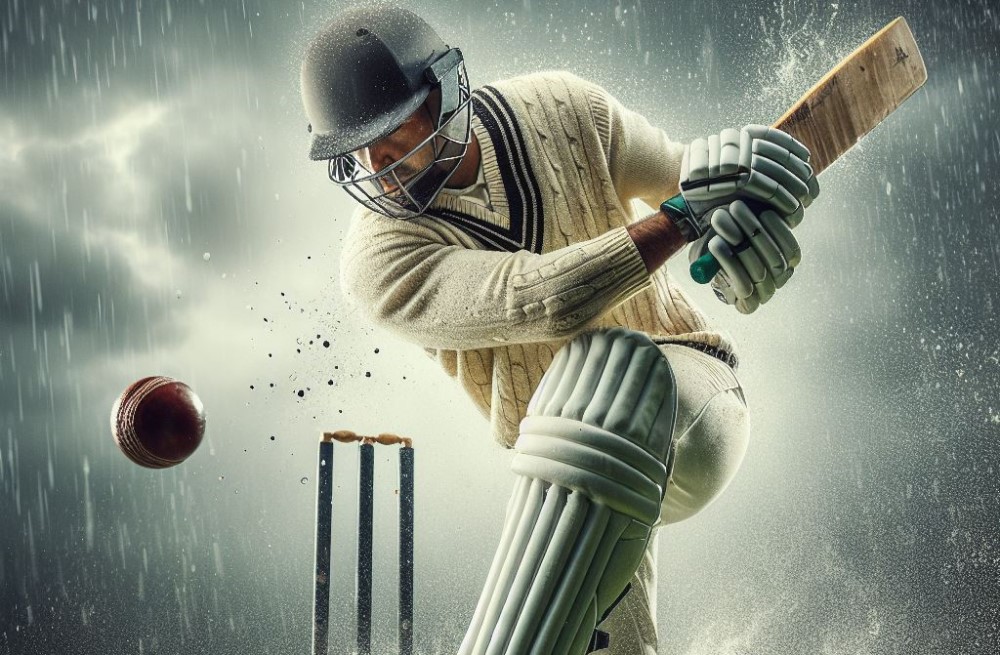
How Do Weather Conditions Affect A Cricket Match
Cricket, being an outdoor sport, is greatly influenced by weather conditions. The impact of weather conditions on a cricket match can be significant, affecting the gameplay, pitch conditions, and overall strategies of the teams involved.
Understanding these effects is crucial for players, coaches, and spectators alike. Let’s explore the various ways in which different weather conditions can impact a cricket match.
Several factors need to be considered when assessing weather conditions in cricket. Pitch conditions play a vital role, as a wet or dry pitch can significantly impact gameplay. Atmospheric conditions, such as humidity and air density, can affect ball movement and swing.
The toss decision can also be influenced by weather conditions, as teams may choose to bat or bowl first based on the expected weather throughout the match.
Different weather conditions have specific effects on a cricket match. Rain delays or abandoned matches are common outcomes in unfavorable weather. Swing and seam movement can be enhanced in windy or rainy conditions, favoring the bowlers.
Dry pitches in hot weather can lead to increased spin for spin bowlers. Fielding and batting may also be affected by weather conditions, such as strong winds or extreme heat.
To adapt to different weather conditions, teams employ various strategies and adaptations. Batting and bowling techniques may vary based on pitch conditions and weather factors. Fielding positions and tactics may be adjusted to accommodate windy or rainy conditions.
Team selection and player roles may also be influenced by the weather, considering the strengths and weaknesses of individual players in different conditions.
By understanding and adapting to the effects of weather conditions, teams can maximize their chances of success in cricket matches. Weather becomes an important factor that can shape the outcome of the game, adding an additional layer of excitement and unpredictability to the sport.
Impact of Weather Conditions on a Cricket Match

When it comes to cricket matches, weather conditions play a significant role, influencing the outcome and dynamics of the game. In this section, we’ll dive into how different weather conditions impact a cricket match.
From rain-soaked pitches to gusty winds, extreme heat, and chilly temperatures, we’ll uncover the diverse challenges that players face. Get ready to discover the fascinating ways in which weather can shape the course of a cricket match!
Rain and Damp Pitch
Rain and a damp pitch can have a significant impact on a cricket match.
- Rain delays or abandoned matches: Heavy rain can lead to matches being delayed or even abandoned if the conditions don’t improve.
- Swing and seam movement: A damp pitch, caused by rain, can favor bowlers as the ball swings more and gets extra movement off the surface.
- Spin bowling on dry pitches: Rain and dampness can prevent spin bowlers from getting the desired grip on the ball, reducing their effectiveness.
- Impact on fielding and batting: Wet conditions make fielding challenging and can affect batting by slowing down the ball and making strokeplay difficult.
Pro-tip: Teams should be prepared to adjust their strategies, such as focusing on swing bowling or adapting batting techniques, to make the most of rain and damp pitch conditions.
Windy Conditions
Windy conditions can have a significant impact on a cricket match, affecting various aspects of the game. Here are some key points to consider:
- Bowling: Bowlers can utilize the wind to their advantage, as it can assist in generating swing and providing additional movement to the ball.
- Batting: Windy conditions can pose a challenge for batsmen in timing their shots properly, as the wind can influence the trajectory and direction of the ball.
- Fielding: Fielders need to stay alert and adjust their positioning accordingly to accommodate the impact of the wind on the flight path of the ball.
- Bowling tactics: Bowlers may have to adapt their line and length based on the direction and strength of the wind to exploit its effect on the ball.
- Batting strategies: Batsmen should be mindful of the influence of the wind and adjust their shot selection and technique accordingly.
Considering these factors during windy conditions can assist teams in making informed decisions and adapting their strategies to maximize their performance in a cricket match.
Extreme Heat
Extreme heat can have a substantial impact on a cricket match. The scorching temperatures can swiftly exhaust players and adversely affect their performance.
Additionally, the intense weather conditions can result in a parched and firm pitch, reducing the bowlers’ chances of generating movement and making it more convenient for batsmen to accumulate runs.
Furthermore, fielding becomes a more arduous task as players grapple with the need to stay hydrated and focused. Consequently, it may become imperative to make adjustments in strategy and tactics, such as employing a greater number of spin bowlers, in order to adapt to these conditions.
It is a known fact that the cricket field can experience temperatures that soar up to a staggering 50 degrees Celsius, rendering it exceedingly challenging for players.
Cold Weather
Cold weather can have a profound effect on a cricket match. It’s important to consider several key factors when playing in cold weather conditions.
Firstly, the pitch conditions can be greatly affected by the cold weather. The drop in temperature can cause the pitch to become harder, which makes it less conducive to seam movement.
Additionally, the atmospheric conditions play a crucial role. The cold and dense air can hinder the ball’s movement through the air, making it more challenging to achieve swing.
Furthermore, both batting and bowling techniques can be impacted. In cold weather, batsmen may struggle to generate power and timing, while bowlers can face difficulties in gripping the ball properly.
The fielding positions and tactics may need adjustments in order to anticipate slower ball movement caused by the cold weather.
Lastly, player roles and team selection can be influenced by the weather. Players who are more experienced and comfortable performing in cold weather conditions may be preferred in the team.
Overall, cold weather significantly affects the gameplay and strategy in a cricket match.
Factors to Consider When Assessing Weather in Cricket

When it comes to assessing weather conditions in cricket, there are several crucial factors to consider. We’ll dive into the pitch conditions, atmospheric conditions, and the role of the toss decision. These elements can have a significant impact on the outcome of a match, so understanding how they come into play is essential.
From the condition of the pitch to the atmospheric variables, we’ll explore how weather can greatly influence the dynamics of the game. So, let’s take a closer look at these factors and their significance in cricket!
Pitch Conditions
The pitch conditions in cricket play a crucial role in determining the outcome of a match.
- Dry pitches: Favor spin bowling and make batting difficult.
- Damp pitches: Assist swing and seam movement, making it challenging for batsmen.
- Green pitches: Provide extra bounce and movement for fast bowlers.
- Flat pitches: Offer little assistance to bowlers and favor batting, leading to high-scoring matches.
In a Test match between India and Australia, the pitch conditions favored spin bowling. The Indian spinners exploited the dry pitch, taking advantage of the sharp turn and variable bounce. The Australian batsmen struggled to handle the spin, resulting in frequent dismissals. This turned the game in India’s favor, leading to a convincing victory.
Atmospheric Conditions
Atmospheric conditions, such as temperature, humidity, wind speed, and air pressure, play a crucial role in a cricket match. These conditions have a significant impact on the strategies, tactics, and gameplay of both teams.
- High temperature: Increases ball speed and bounce, affecting batting and fielding.
- Humidity: Affects the swing and movement of the ball, influencing bowling techniques.
- Strong winds: Impacts ball direction, fielding positions, and batting strategies.
- Low atmospheric pressure: May cause the ball to swing more, altering bowling line and length.
Pro tip: It is crucial for teams to closely monitor and adapt to atmospheric conditions during the match. By adjusting their tactics and strategies accordingly, they can maximize their chances of success.
Role of Toss Decision
The role of the toss decision is crucial in a cricket match as it can greatly impact the outcome of the game. When a team wins the toss, they have the opportunity to choose whether to bat or bowl first. This decision is based on the weather conditions at that time.
If the weather is sunny and dry, the team winning the toss may choose to bat first to take advantage of favorable batting conditions. On the other hand, if the weather is overcast or there is a chance of rain, the team may decide to bowl first to make the most of seam or swing movement.
The toss decision holds significant importance as it can determine the course of the game. Teams carefully assess the weather conditions, pitch conditions, and potential impact on the game to make an informed decision.
They consider if there will be any assistance for the bowlers, such as swing or spin, based on the atmospheric conditions. Additionally, teams also acknowledge the psychological advantage the toss decision can give to the winning team.
By carefully analyzing the role of the toss decision, teams can optimize their chances of success in different weather conditions. It is important for teams to align their game plan and strategy with the toss decision. This allows them to make the best possible decision and give themselves an advantage in the game.
Specific Effects of Weather Conditions on Cricket Match

The specific effects of weather conditions on a cricket match are fascinating, and they can greatly impact the dynamics of the game. From rain delays and abandoned matches to the challenging swing and seam movement, weather plays a crucial role in determining the outcome.
Not only does it affect spin bowling on dry pitches, but it also has a significant impact on the fielding and batting performances. Hold on tight as we dive into how these weather conditions shape the thrilling world of cricket!
Rain Delays or Abandoned Matches
Rain Delays or Abandoned Matches are commonplace in cricket due to the unpredictability of weather conditions. These interruptions can have a significant impact on the outcome of a game and test the resilience of the teams involved.
Rain delays may result in a reduction in the number of overs played or even the complete abandonment of a match. Such situations can be frustrating for players, officials, and fans alike. As a helpful tip, cricket enthusiasts should keep a close eye on the weather forecast and plan accordingly.
By being prepared for rain delays or abandoned matches, you can make the most of the situation and enjoy the game regardless of the weather conditions.
Swing and Seam Movement
Swing and seam movement play a vital role in a cricket match, as they are strongly influenced by weather conditions. The behavior of the ball in the air or off the pitch can pose a challenge for batsmen in making solid contact.
Cooler and overcast conditions are ideal for swing movement, as they induce the ball to glide through the air. On the other hand, seam movement thrives on a damp pitch, typically caused by rain.
Bowlers can exploit these conditions by maintaining an excellent line and length, thereby making it arduous for batsmen to accumulate runs. Adapting batting techniques and devising strategic bowling plans become imperative in countering the effects of these movements.
Spin Bowling on Dry Pitches
Spin Bowling on Dry Pitches has a significant impact on the dynamics of a cricket match. Here are some crucial points to consider regarding this:
- Increased grip: Dry pitches offer spin bowlers more grip, enabling them to generate greater turn and bounce.
- Variations in spin: The dry surface allows spinners to extract more spin, making it challenging for batsmen to anticipate the ball’s movement.
- Uneven bounce: As the pitch dries out, cracks develop and it deteriorates, resulting in unpredictable bounce. Spinners can exploit this to deceive batsmen with their deliveries.
- Reduced pace: Dry pitches slow down the ball’s pace, making it difficult for batsmen to time their shots effectively.
History demonstrates that Spin Bowling on Dry Pitches has proven to be a game-changer in numerous cricket matches. Spinners often dominate the proceedings and play a crucial role in their team’s success.
Impact on Fielding and Batting
Weather conditions can have a significant impact on fielding and batting in a cricket match. The impact on fielding and batting is evident in several ways:
- Damp Pitch: Moisture on the pitch can make the ball unpredictable, causing difficulty for fielders to judge its movement and bounce. This unpredictable ball movement can have a profound impact on both fielding and batting.
- Windy Conditions: Strong winds can affect the trajectory of the ball, making it challenging for fielders to position themselves and for batsmen to time their shots. The impact of windy conditions on fielding and batting cannot be ignored.
- Extreme Heat: Hot weather can result in a dry and cracked pitch, which can offer more favorable conditions for spin bowlers and challenges for fielders to maintain their energy levels. The impact of extreme heat on both fielding and batting is undeniable.
- Cold Weather: Cold temperatures can make the ball harder, leading to less bounce and movement, affecting the fielders’ ability to make quick reactions. This lack of bounce and movement can have a significant impact on fielding and batting.
These weather conditions require teams to adapt their fielding positions and tactics and make appropriate selections based on the playing conditions, considering their impact on fielding and batting.
Strategies and Adaptations in Different Weather Conditions

In the world of cricket, handling different weather conditions requires strategic thinking and adaptability. Let’s dive into the strategies and adaptations used by cricket teams when facing various weather conditions.
From batting and bowling techniques to fielding positions and tactics, as well as team selection and player roles, this section explores the key aspects that come into play.
So get ready to uncover the secrets behind successfully navigating challenging weather conditions in the game of cricket.
Batting and Bowling Techniques
Batting and bowling techniques are essential skills in a cricket match, particularly when it comes to adjusting to different weather conditions.
- Swing bowling: Bowlers can use specific techniques to generate significant swing in windy conditions. By bowling into the wind and utilizing the polished side of the ball, they can exploit the air movement.
- Spin bowling: Spinners excel on dry pitches, as they can extract turn and bounce. Legends like Shane Warne have perfected the art of spin bowling on such surfaces.
- Batting against swing: Batsmen must adapt their footwork and timing to counter swing bowling effectively. It is crucial to play with soft hands and avoid driving the ball on the up.
- Batting against spin: Playing against spin requires a solid technique and the ability to select appropriate shots such as the sweep, late cut, and using the feet to reach the pitch of the ball.
In a notable example, during the 2009 Ashes series, England‘s batting technique against swing played a vital role in their victory.
Ian Bell and Paul Collingwood demonstrated remarkable footwork and defensive skills, allowing them to build partnerships in challenging conditions. Their ability to adapt was instrumental in England’s success.
Fielding Positions and Tactics
Fielding Positions and Tactics play a crucial role in a game of cricket, especially when considering the impact of weather conditions. Here are some key aspects to consider:
- Positioning: Fielders need to be strategically placed based on the pitch conditions and the type of bowler. For example, in swing-friendly conditions, fielders should be positioned closer to the bat to catch edges.
- Risk Assessment: Fielders should assess the weather conditions and adjust their tactics accordingly. In windy conditions, fielders should be prepared for high catches, while in wet conditions, they should anticipate slippery surfaces and focus on good ball control.
- Communication: Effective communication between fielders is vital to adapt to changing weather conditions. Quick decisions and coordination can make a significant difference in Fielding success.
Pro-tip: In challenging weather conditions, Fielders should prioritize agility and wear appropriate footwear to maintain stability and prevent injuries.
Team Selection and Player Roles

Team selection and player roles are of utmost importance when it comes to cricket, and they can be greatly influenced by various weather conditions.
Rain and Damp:
- Pitch Opt for bowlers who can exploit wet conditions and generate swing.
- Choose batsmen with strong defensive techniques.
Windy Conditions:
- Consider fast bowlers who can use the wind to their advantage.
- Select nimble fielders for catching and agility.
Extreme Heat:
- Prioritize bowlers with good stamina to cope with the heat.
- Choose players with experience in handling oppressive heat.
Cold Weather:
- Select spinners who can exploit the unpredictable bounce on cold pitches.
- Pick players with good hand-eye coordination for batting.
It is evident that weather conditions play a significant role in determining the composition of the team and the roles assigned to players. The ability to adapt to these conditions can greatly impact the outcome of a cricket match.
Frequently Asked Questions
How do weather conditions affect a cricket match?
Weather conditions play a crucial role in determining the outcome of a cricket match.
What are the effects of clear skies on a cricket match?
Clear skies are favorable for batsmen as the ball doesn’t swing much and more runs are generally scored in such conditions.
How do overcast and humid conditions affect the game?
Overcast and humid conditions assist the bowling side, as the ball swings and moves in the air, making it challenging for batsmen.
What impact does rain have on a cricket match?
Rain can cause delays or cancellations of matches, which can ultimately affect the final result. Wet grounds from rain can slow down the ball’s speed and make it harder for players to grip.
How does heat and humidity affect cricketers?
Heat and humidity can lead to heat stress and dehydration among cricketers. It can have a negative impact on player performance and wellbeing.
What is the impact of unpredictable weather in England?
British summers are known for unpredictable weather, and a significant number of one-day fixtures in England have been delayed or cancelled due to rain since 2000.





